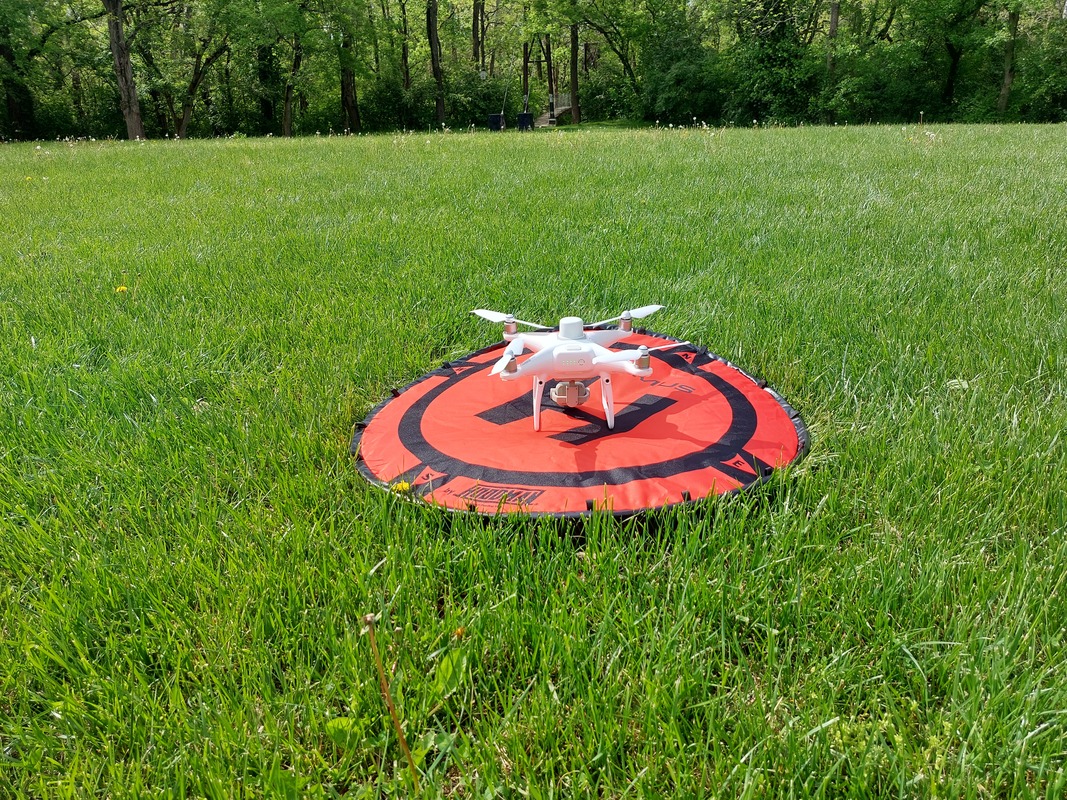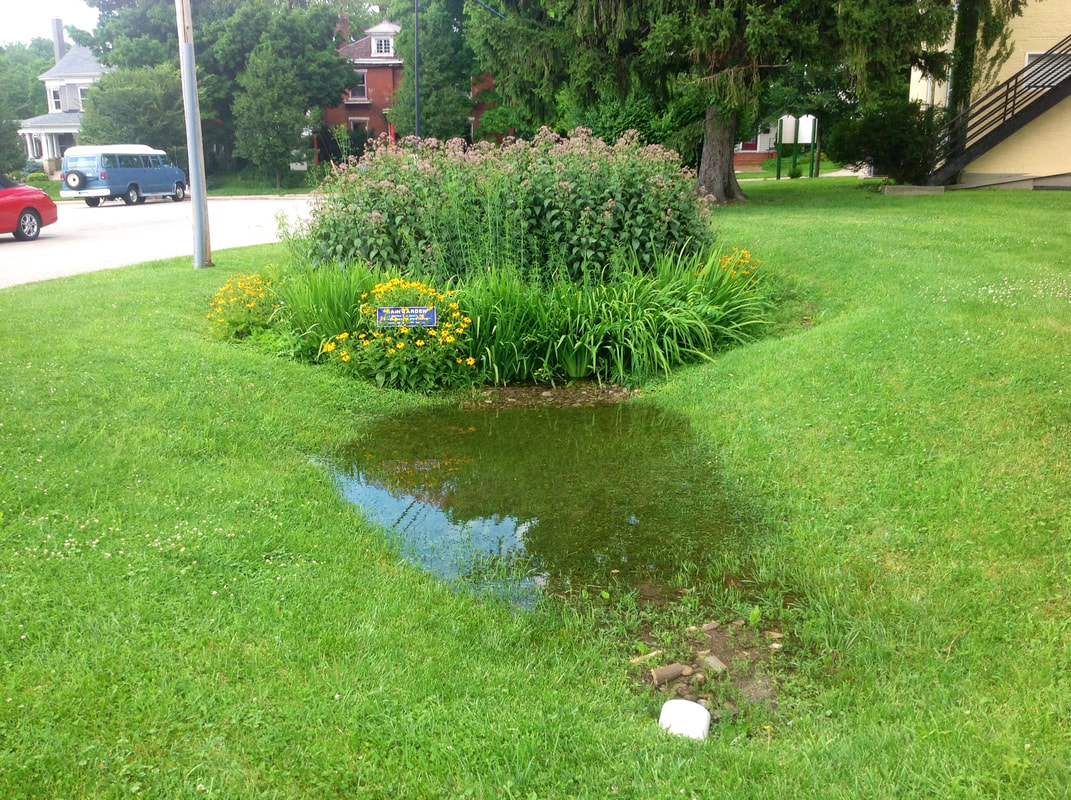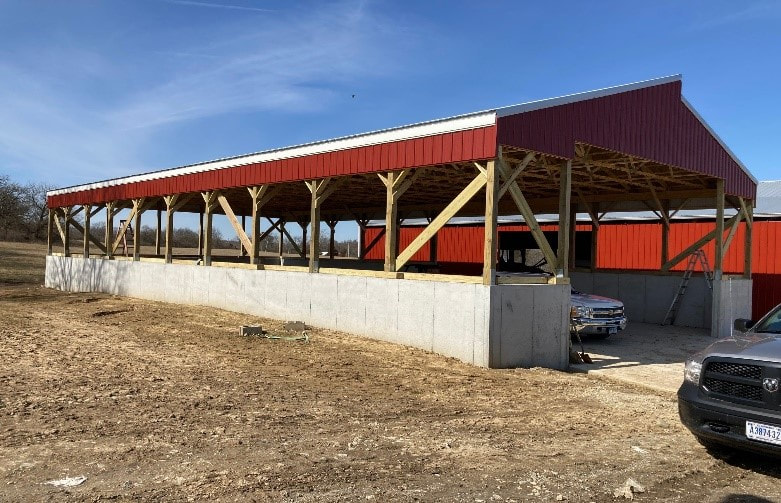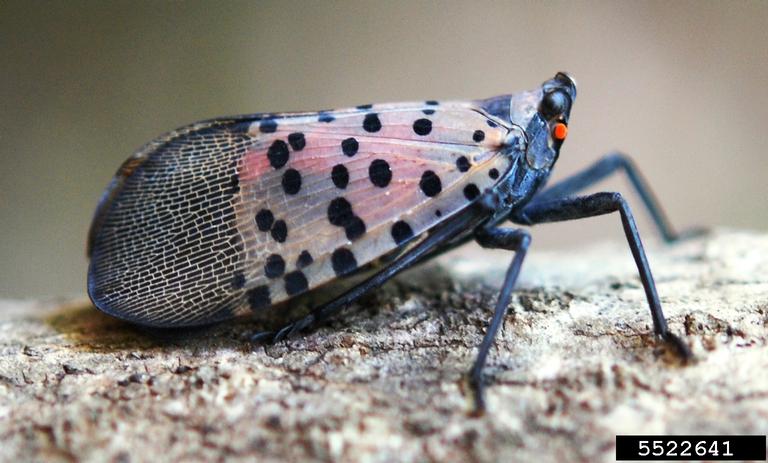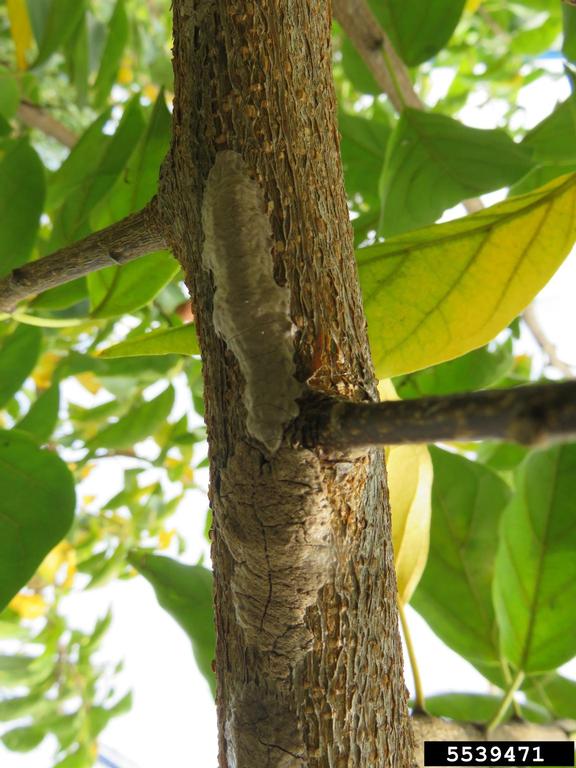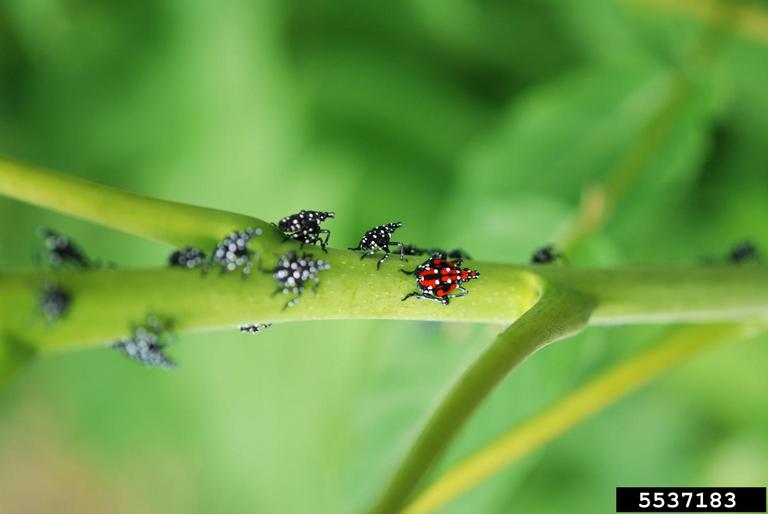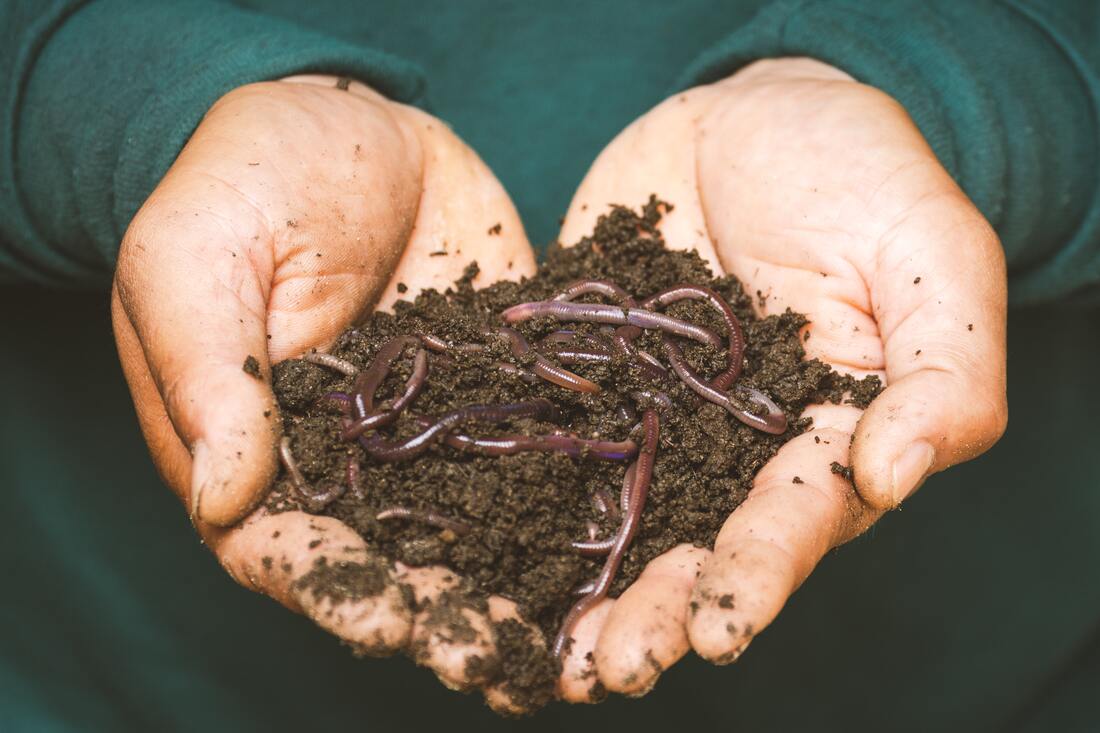|
As the technology for Unmanned Aerial Vehicles (UAVs) becomes increasingly more powerful and affordable, it is beginning to have an increased role in the agriculture world. UAVs, or more commonly drones, can be used for a variety of purposes, from monitoring crops, herds, and infrastructure to applying resources where they are most needed, and they will only continue to be more useful and important in the years to come. Here are a look at a few ways that agricultural producers are beginning to utilize drones in their businesses.
Monitoring Many drones with optical sensors can be very useful in remote monitoring of fields or rangeland. Having an aerial view of a field can give a producer the chance to see patterns that are not readily available from the ground, such as damage to crops from a storm or where plants are not growing as healthily. Additional optical sensors such as near infrared can be used to create normalized difference vegetation index (NDVI) imagery of crops, giving a detailed and precise measurement of crop health and showing where water or nutrients can be best applied. Drones can also be used to monitor and track herds or check for damage to fence rows or other infrastructure much more quickly than it would take to drive or walk a route, saving time and resources for routine tasks. Application Some drones are equipped to carry payloads and can be used in the precise application of resources. If a part of a field is not receiving enough water or needs to receive more fertilizer, then a drone can be used to deliver the precise amount of nutrients exactly where it is most needed to save on cost for the producer. Conversely, drones can also be used to deliver payloads of pesticide or herbicide where there is active damage to crops. Repeatability and Autonomy Many drones today come with software that allows the pilot to preplan flight missions and save them for future use. This means that the drone can be flown on the exact same path and perform the exact same actions whenever needed. This frees up the pilot from having to manually control the drone each flight and allows for high accuracy in repeating tasks. This also allows for repeated missions to collect the same data over multiple flights, an invaluable resource when comparing such things as the stages of construction of a conservation practice or routinely monitoring field health during the growing season. References https://nebraskacorn.gov/cornstalk/sustainability/four-ways-drones-are-used-in-agriculture/ https://www.tntech.edu/news/releases/22-23/class-demonstrates-variety-of-uses-for-drones-in-agriculture.php
2 Comments
What does it mean to make your home green for stormwater? Green stormwater practices around your home use plants, soils, and other elements to manage water quality and mimic the natural water cycle. Green stormwater practices retain, detain, filter, harvest, and infiltrate stormwater runoff to create healthier urban environments.
Incorporating green infrastructure provides many benefits such as improving water quality by removing pollutants, habitat preservation for native plants and animals, decreasing urbanization stream impacts, and overall enhancement of neighborhood aesthetics. The following is a list of management practices that landowners can incorporate on their own property to help control and keep stormwater clean. (Sources: Penn State Extension, United States Environmental Protection Agency)
For more information regarding green infrastructure for the home, Warren County Soil and Water Conservation District programs and/or technical assistance on water or soil questions, visit http://warrenswcd.com or call, 513-695-1337. A horse, on average, can weigh nearly 1,000 pounds and can defecate roughly 13 times a day. This roughly equates to about 50 pounds of wet manure a day – including urine. The bedding that is gathered in the animal waste, also contributes to the weight. The bedding can increase the total volume to 2-3 feet of waste per day. Per one ton of manure, the nutrients that can be found include nitrogen, phosphorus, and potassium – with bedding having the potential to also affect the nutrient reading. If not managed properly, manure runoff can cause pollution with the potential to negatively impact local waterbody sources.
Storage:
Keeping animal waste as dry as possible results in less waste that must be transported elsewhere. Consider a NRCS Conservation Practice for a waste storage facility which will help prevent runoff and is also helpful for winter storage, since Ohio does not allow manure spreading on frozen or snow-covered ground. For large facilities, cost-share options may be available. Composting: Composting utilizes an accelerated decomposition process that uses the organisms and bacteria found growing in the soil that helps break down manure. The process requires proper oxygen and moisture levels, as well as proper feedstock mixture, to ensure proper microbial activity. The composting piles must be turned to ensure proper aeration and the final product of composting is a crumbly and has a low odor and resembles topsoil. Contact a technician at Warren County Soil & Water Conservation District at (513) 695-1337 if you have questions. Also, consider the Ohio Livestock Manure Management Guide written by OSU Extension: https://agcrops.osu.edu/sites/agcrops/files/imce/fertility/bulletin_604.pdf Adult SLF- Photo credit: Lawrence Barringer, Pennsylvania Sept. of Agriculture Citizens are urged to be careful not to bring the Spotted Lantern Fly (SLF) home with them as a hitchhiker. People driving out of state or to parts of Ohio with known infestations should inspect and/or wash their vehicles upon return to ensure these insects have not accidentally traveled back with them. Spotted Lantern Fly (SLF) which is an invasive plant hopper that is native to China was found in Pennsylvania in 2014. In late 2020, SLF was found in southern Ohio in Mingo Junction and in northern Ohio, Cuyahoga County in 2021. It is a major pest of crops including grapes, apples, hops, walnuts and hardwood trees. Nymphs and adults prefer to feed on the invasive tree of heaven (Ailanthus altissima) but can feed on more than 70 plant species, and has the potential to greatly impact the viticulture, tree fruit, nursery, and timber industries. The insects suck sap from stems and branches which can weaken and damage the plant. The feeding can result in oozing sap, wilting, leaf curling, and dieback. In addition, during feeding the SLF secretes honeydew which can buildup on and underneath the plant, which in turn promotes the growth of black sooty mold. Black sooty mold around the base of plants or oozing sap may indicate the presence of the spotted lanternfly, however other pests can cause these symptoms as well. Black sooty mold is harmless to people however it causes damage to plants. In counties infested and quarantined for spotted lanternfly, residents report hundreds of these insects that affect their quality of life and ability to enjoy the outdoors during the spring and summer months. Spotted lanternflies will cover trees, swarm in the air, and their honeydew can coat decks and play equipment. Egg mass- Photo credit: Kenneth R. Law, USDA APHIS PPQ Immature SLF- Photo credit: Lawrence Barringer, Pennsylvania Sept. of Agriculture SLF will lay eggs beginning in October through the beginning of winter. The egg masses of the SLF are small, grey masses protected by a waxy covering. After hatching in late spring, the SLF goes through four nymph stages. During the first three they appear black with white spots, and in the last stage, which typically occurs during mid-summer, they are red with white dots and black stripes. During the late summer and autumn, the SLF is in the adult moth stage. These adults are larger (approximately 1 inch), with black bodies and brightly colored wings.
Spotted lanternfly, which likely arrived on imported goods from Asia, is a plant hopper and not a strong flier. It is moved greater distances by people moving infested materials. It lays eggs on almost any surface, including vehicles, trailers, outdoor equipment, patio furniture, etc. Egg masses can be removed by scrapping with a hard or rigid tool and disposed of into a container of rubbing alcohol. Early detection is critical to prevent economic and ecological losses. The public has played a key role in detecting spotted lanternfly and the success of stopping its spread depends on help from the public to look for and report signs of the pest. If you suspect a spotted lanternfly infestation, at any life stage, please report the finding to the Ohio Department of Agriculture Plant Pest Control (614-728-6400, [email protected]), your local OSU Extension specialist (https://extension.osu.edu) or by using the Great Lakes Early Detection mobile reporting app (https://apps.bugwood.org/apps/gledn/). For more questions regarding Warren County Soil and Water Conservation District programs and/or technical assistance on water or soil questions, visit http://warrenswcd.com or call, 513-695-1337. It is hard to believe but our food waste and other organic materials such as paper and yard trimmings equate to nearly 55% of our total waste with food making up 20-30% of this total. When these items are in our landfills they breakdown and create a material called leachate, which is toxic and can pollute groundwater, surface water and soil. Vermicomposting, a process that relies on earthworms and microorganisms to break down organic matter and transform it into a product that can be used as a valuable soil amendment and source of plant nutrients, can help homeowners with their gardening efforts but also keeps organic materials from causing problems in the landfill! Vermicomposting is a way to get earthworms to work for you in a more organized way. You can become a worm farmer easily. North Carolina State University Extension is a leader in vermicomposting. Rhonda Sherman with North Carolina Extension, states that you need 4 items to begin worm farming.
Sometimes worm bins may have issues that arise over time. It is important to note that your bin should not:
|
Details
Warren County SWCD Staff BlogA blog to keep you informed on all the latest news at Warren County SWCD and in the conservation world. Archives
May 2024
Categories
All
|
|
|
Contact:PHONE: (513) 695 - 1337
EMAIL: [email protected] HOURS: Monday - Friday 7:30am - 4:00pm (except holidays) Connect:Warren County Soil & Water Conservation District Copyright © 2016
Warren SWCD Privacy Notice. Emails are serviced by Constant Contact. Constant Contact's Privacy Notice. |
